ADVERTISER DISCLOSURE: The Frugal Tourist is part of an affiliate sales network and receives compensation for sending traffic to partner sites, such as MileValue.com and Cardratings. This compensation may impact how and where links appear on this site. This site does not include all financial companies or all available financial offers. Terms apply to American Express benefits and offers. Enrollment may be required for select American Express benefits and offers. Visit americanexpress.com to learn more. All information about the American Express Schwab Platinum has been collected independently by The Frugal Tourist.
EDITORIAL DISCLOSURE: Opinions, reviews, analyses & recommendations are the author’s alone and have not been reviewed, endorsed, or approved by any of these entities.
Without a doubt, South America is one of my favorite continents.
South America has some of the most diverse scenery in the world, which is why it has been said on many occasions that it is an explorer’s paradise. I completely agree with that assertion.
With our limited time on earth, one of the best ways to spend it is by venturing into this spectacular region.
The burning question is, what should I not miss when I go to South America?
In this blog post, I narrow down my ten favorite must-see list attractions so you can prioritize which sites to visit based on your (limited) time and interest. Indeed, all of these phenomenal sites blew me away.
My travels across this incredible region have led me to discover many extraordinary highlights – marvelous towering peaks, iconic lost ancient empires, wondrously scrumptious cuisine, and pristinely lush jungles – splattered everywhere in this spectacularly scenic and geographically diverse continent.
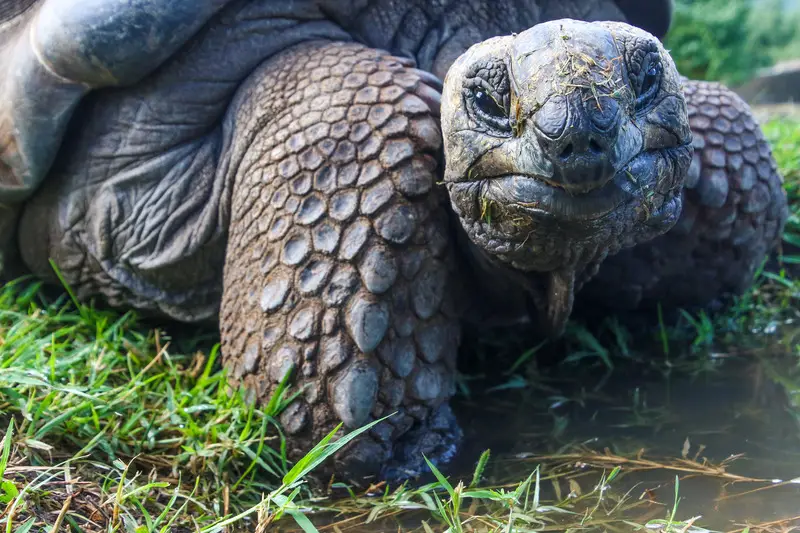

Stunning South America
In the past decade, my love affair with this continent has made me return at least eight times, providing me with countless opportunities to travel extensively all over—from its northernmost tip in Colombia to the southernmost region of Patagonia.
I still have quite a lot of ground to cover, but for now, I’d like to list the crème de la crème or the best of the best in this breathtaking continent—absolutely worthy of every traveler’s bucket list!
You should not miss these sites when venturing out to this enthralling continent.
While I have to underscore that my choices are subjective, I have also devoted an inordinate amount of time reading travel blogs and browsing travel guides about South America, which certainly merit my selections.
With that said, I would be remiss if I did not mention that I have not visited all the countries on this continent.
Therefore, please use this list as a reference or a jumping-off point to assist you with your trip planning rather than the definitive guide to South America.
| Countries Visited | Countries Not Yet Visited |
|---|---|
| Argentina Bolivia Brazil Chile Colombia Ecuador Peru Uruguay | Venezuela Paraguay Suriname French Guiana Guyana |
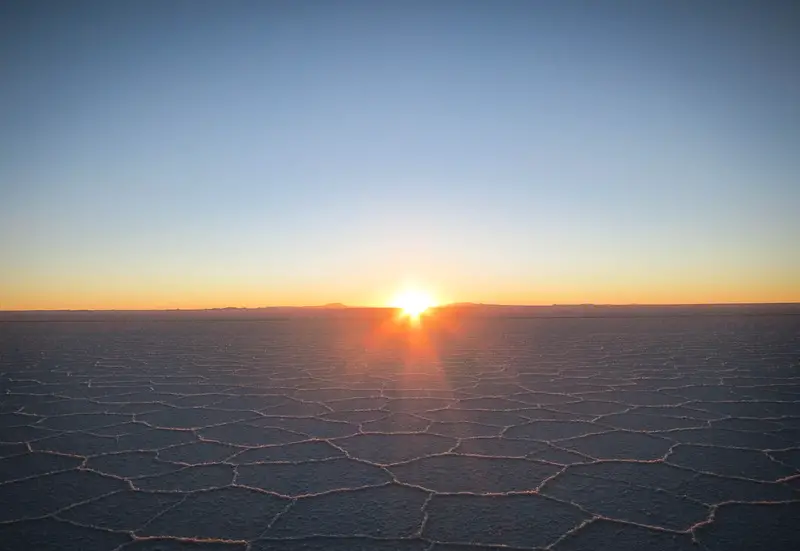
South America’s Top Ten Bucket-List Highlights
1. Galapagos Islands, Ecuador
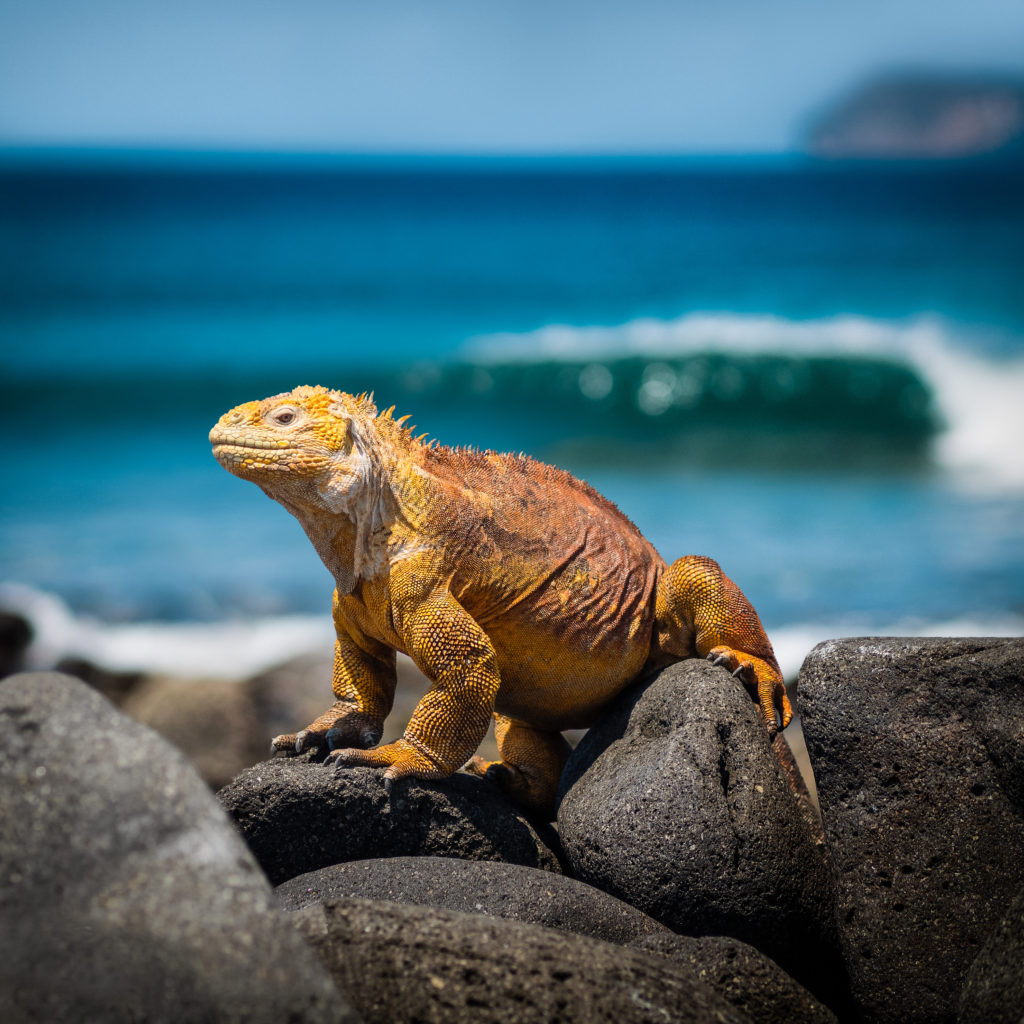
My first-ever destination in South America occupies the number 1 spot on my Top Ten list.
The Galapagos Islands are a cluster of volcanic islets located about 600 miles west of South America’s western shore and belonging to Ecuador.
They’ve been labeled a natural wonder because of the incredible variety of plant and animal life that thrive there – most of which has never been documented elsewhere.
The islands were listed as a World Heritage site because they contain some of the world’s greatest biological diversity, with many endemic flora and fauna.
These islands should not be missed if you love viewing wildlife in their natural habitat.
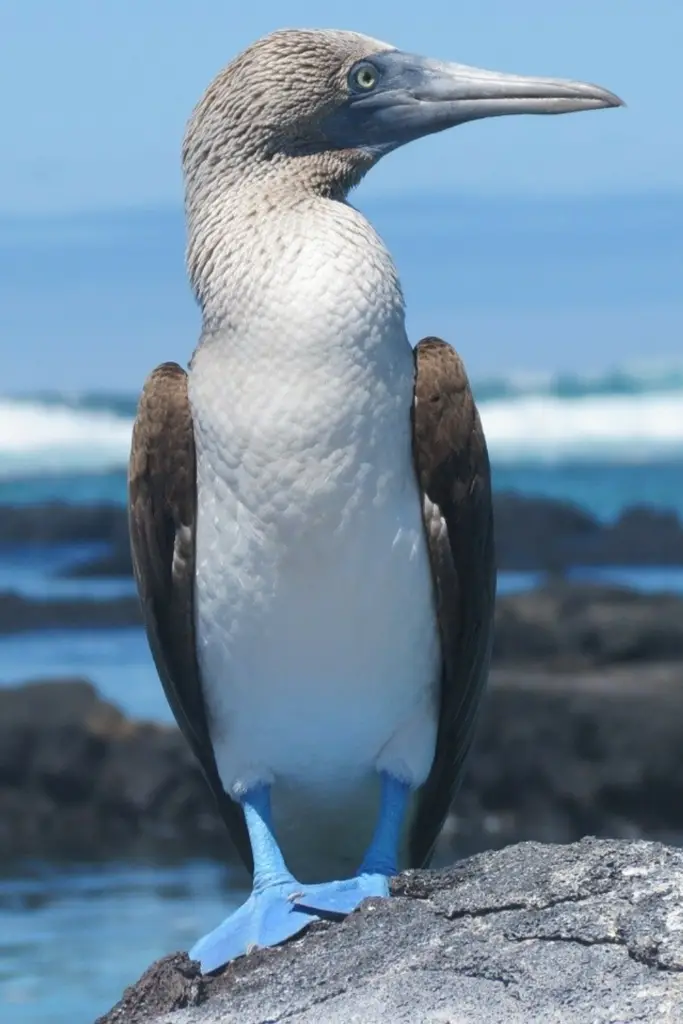
It is also the birthplace of Charles Darwin’s Theory of Evolution by Natural Selection.
The opportunity to observe various animals here in close proximity is unparalleled.
Here, I witnessed fearless endangered birds mating at point-blank range, snorkeled with sharks and somersaulting sea lions, and walked alongside humungous tortoises and hundreds of iguanas.
Yet many travelers make the mistake of visiting only one island and swiftly flying back to the mainland.
Sadly, this is tantamount to flying to Africa only to see elephants – it barely scratches the surface.
My recommendation is to take a multi-day cruise with a naturalist on board.
These wildlife experts provide vital information about the critical history of the islands and why they matter in understanding the metamorphosis of living beings.
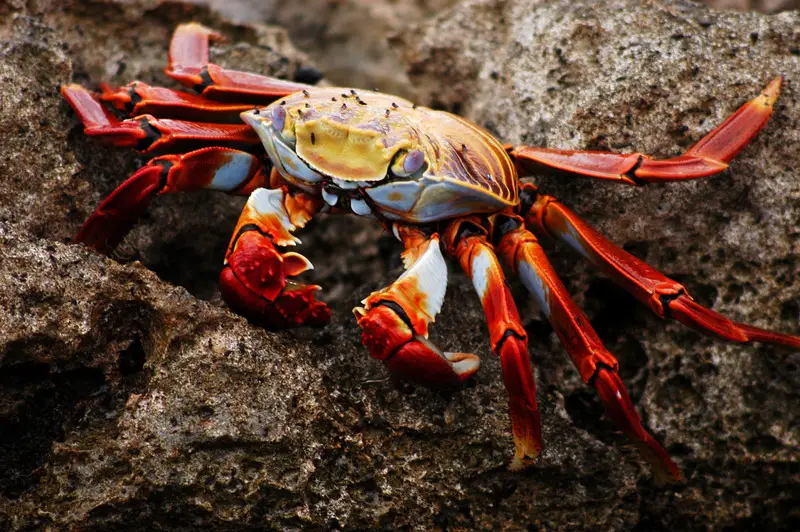
The cruise also provides an opportunity to visit far-flung secluded islands and see endangered wildlife that can only be found in this part of the globe.
The Galapagos has about 18 main islands, but most flights from the mainland arrive at Baltra Island.
The cruise I took had an 8-day itinerary that visited ten islands. Suffice it to say, it was worth every penny!
My 8-Day Galapagos Islands Cruise Itinerary
Day 1: BALTRA – NORTH SEYMOUR for the blue-footed boobies and frigate birds.
Day 2: CHINESE HAT for red Sally Lightfoot crabs, marine iguanas, lava lizards, and sealions / BARTOLOMÉ ISLAND for Galapagos penguins.
Day 3: GENOVESA: PRINCE PHILLIPS STEPS – DARWIN BAY for birds and snorkeling (and a chance to see hammerhead sharks)
Day 4: PUERTO EGAS – RABIDA for pelicans and finches
Day 5: DARWIN STATION – HIGHLANDS OF SANTA CRUZ for giant tortoises
Day 6: ESPAÑOLA: PTA. SUAREZ – PLAYA GARDNER for waved albatrosses, blue-footed boobies, and fantastic snorkeling.
Day 7: SANTA FE – SOUTH PLAZA for marine and land iguanas and geckos.
Day 8: BLACK TURTLE COVE for green turtles, sharks, and manta rays (only accessible via panga or motorized dinghy)
My favorite island: the bird sanctuary Genovesa, where endemic Galapagos owls and red-footed boobies reside.

2. Chilean Patagonia (W-Trek)
Patagonia is one of my favorite outdoor destinations worldwide, so much so that I have visited it three times.
The iconic 5-day “W-Trek” through Torres Del Paine National Park remains my most memorable multi-day hike ever.
There are not enough superlatives to sufficiently encapsulate our experience here. Hence, it is unsurprising that the W-Trek is consistently ranked as one of South America’s spellbinding highlights.
Torres Del Paine National Park is one of the most beautiful places I have ever seen.
It was like nothing I had ever experienced, with its rolling hills, endless lakes, and snowcapped peaks. And I’ve hiked everywhere.
The colors are so vivid that you feel like you’re in the middle of a dream or a movie. But this isn’t just some tourist attraction- there are plenty of things to do here for all different types of travelers.
Whether you want to backpack through Patagonian forests or take in the views from a boat tour on Lake Pehoe, the World Trek has an outdoor adventure waiting for you!

Nevertheless, the main tourist draw here is the W-Trek. This spectacular mountain circuit should not be missed; however, it is no walk in the park.
But if you’re seeking a thrilling adventure and willing to hike great distances – this will undoubtedly be an experience you will remember for a lifetime.
At any rate, Torres del Paine National Park has also been designated as a World Heritage Site, and it’s not too hard to see why. It’s an adventurer’s dreamland.
While the weather can be unpredictable due to its geographical location, your odds of getting fantastic trekking conditions increase when you visit during the Southern Hemisphere’s summer season, which is between November and February.
Blessed with relatively calm weather and unusually uncrowded trails, my friends and I have cherished splendid views of glistening glaciers, scenic valleys, and majestic peaks since we trekked in December.
Despite the generally sunny climate, there were a few hours of rain and periodic strong winds, so it is better to come prepared. I suggest packing a rain jacket and layers of extra clothing.
I recommend booking
Otherwise, all alternative accommodations will be high-end and thus astronomically expensive.
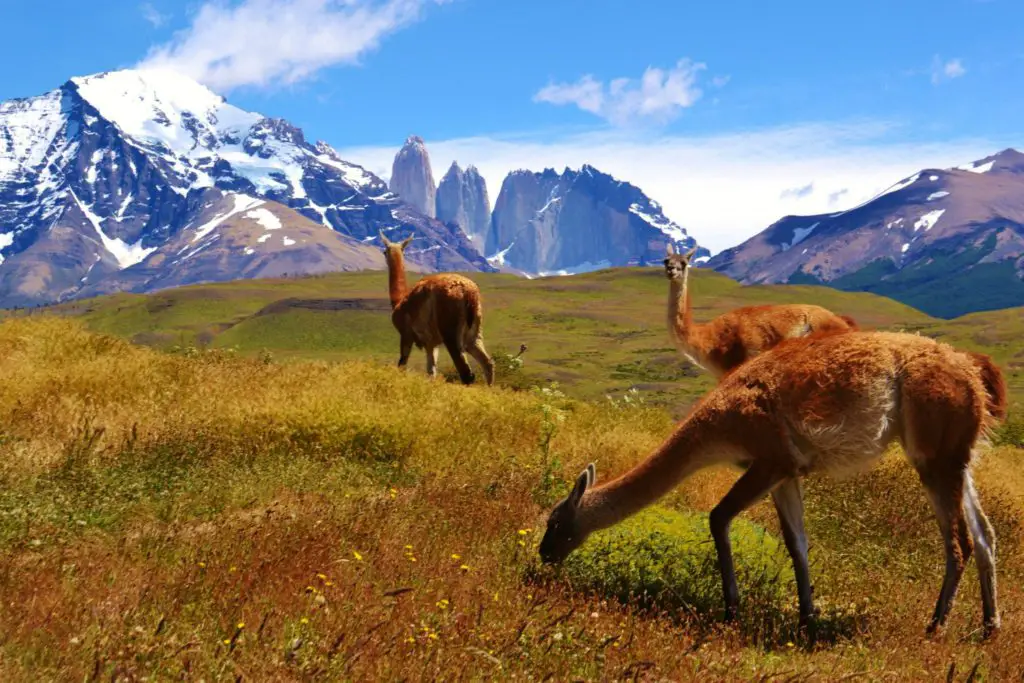
My 5-Day W-Trek Itinerary
How To Get To Patagonia:
There are frequent direct flights from Santiago, Chile to Punta Arenas, the gateway to Chilean Patagonia.
Day 1:
AM: Leave Puerto Natales. Take the early bus to the Park Entrance. Take the Catamaran across Lago (Lake) Pehoe.
PM: Hike north towards Glacier Grey.
Sleep: Refugio Glacier Grey
Day 2:
AM – Walk up to Glacier Grey for stupendous views. Check-out.
PM – Hike south towards the Catamaran dock where Refugio Paine Grande is located.
Sleep: Refugio Paine Grande
Day 3:
AM: Early Check-Out. Hike to Campo Italiano & leave backpacks at the camp. Hike the French Valley to Mirador Britanico.
PM: Return to Campo Italiano to grab backpacks. Hike to Refugio Los Cuernos.
Sleep: Refugio Los Cuernos
Day 4:
AM: Hike towards Refugio Los Chilenos. Check-in at the Refugio.
PM: Sunset hike to Torres Del Paine.
Sleep: Refugio Los Chilenos
Day 5:
AM: Optional Sunrise hike to Torres Del Paine. Check-out. Hike back to the park entrance.
PM: Take the bus back to Puerto Natales
Do not miss: Glacier Grey, the French Valley, and the astonishing Torres.
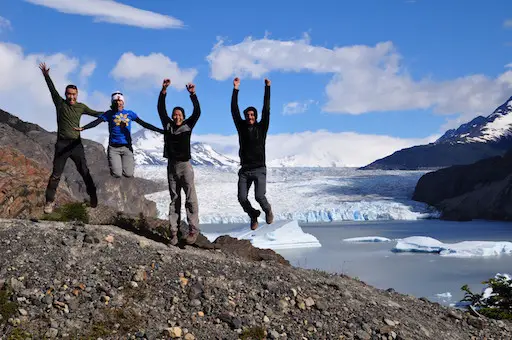
3. Iguazu Falls
Straddling Argentina and Brazil, the mighty Iguazu Falls will undoubtedly exceed a traveler’s expectations.
It is considered to be one of South America’s bucket list destinations as it gives tourists a chance to witness one of the world’s most powerful waterfalls in person.
Iguazu Falls is located on the border between Argentina and Brazil.
It has over 275 individual falls that stretch 2 kilometers.
The amount of water flowing over these falls is staggering, with some days seeing more than 10 million gallons cascading down.
To put it into perspective, that’s enough water to fill up an Olympic-sized swimming pool every second!
Iguazu Falls offers visitors amazing views from above and below. Visitors can take a helicopter tour or walk along catwalks suspended high above the torrential waters to get an aerial view of the Falls.
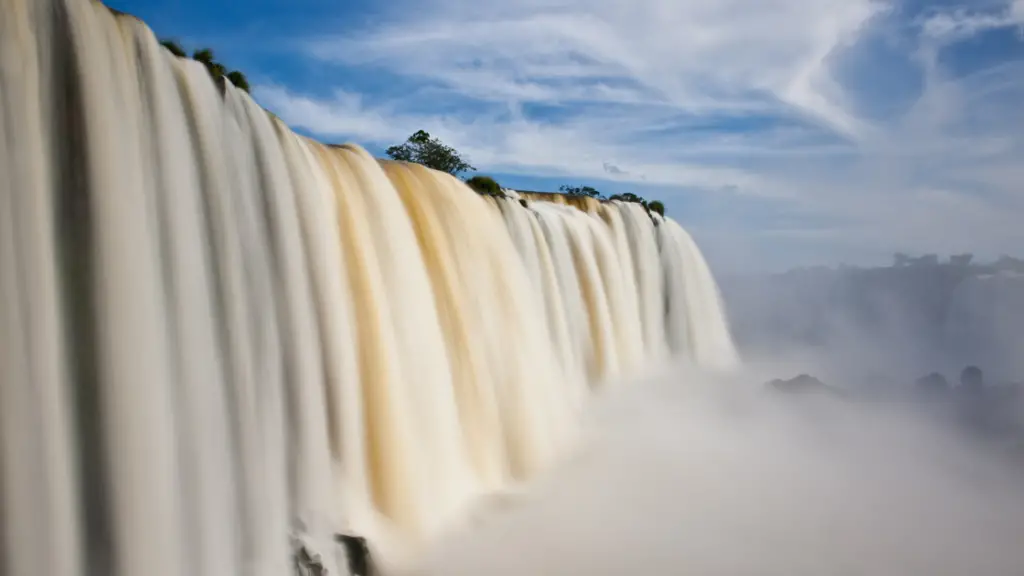
The Argentine side of the falls flows over a long canyon with no obstructions between the water and onlookers.
Strategically positioned walkways wrap around the waterfalls, reaching within arm’s length of the principal highlight – the astounding Devil’s Throat.
The Devil’s Throat is a narrow canyon in Iguazu, where the water plunges over a cliff and down into an abyss.
The name comes from one of its most fascinating features: it seems shaped like a devil’s mouth, with two rows of sharp teeth hanging off either side.
If you only have one day to spend at Iguazu Falls, make a beeline for this breathtaking park section.
Devil’s Throat should not be missed on your trip to South America.
Other than flying above and walking alongside these exhilarating falls, boat tours perilously approach the point where the falls hit the river if you are so adventurously inclined.

On the other hand, the Brazilian side of the falls pours over cliffs carved out by subterranean lava flows.
This bedrock has eroded over time, leaving several unique viewing points, each with its perspective of the waterfalls.
You can reach the Brazilian side by taking a public bus or a taxi.
If you have the luxury of time, I highly recommend crossing over to the Brazilian side to see a panoramic view of the falls in all its glory.
There are also junctures where you can see all three South American countries simultaneously: Argentina, Brazil, and Paraguay!
Spend a minimum of 2 nights to give yourself ample time to explore this astounding natural wonder thoroughly.
Do not miss both the Argentinian and Brazilian sides!
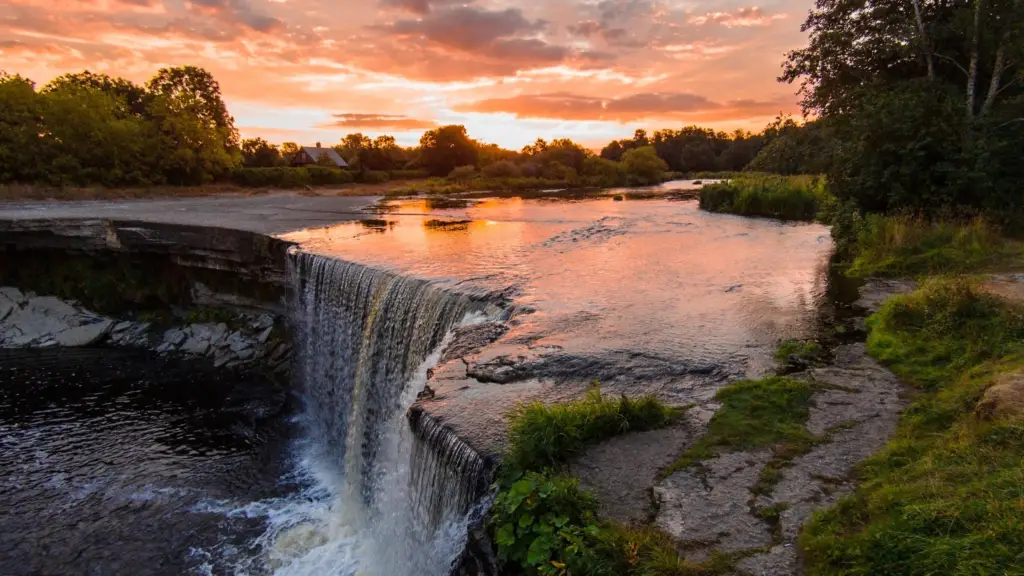
How To Get to Iguazu Falls:
Argentina: Fly from Buenos Aires to Puerto Iguazu
Brazil: Fly from any city in Brazil to Foz Do Iguazu

4. Argentinian Patagonia
The Argentinian side of Patagonia pales in comparison to its more famous brother across the border, but do not think twice about including this on your bucket list.
The showstopper here is the Perito Moreno Glacier.
Numerous tours are available, including hiking on top of it and through it.
There is also a walkway that ushers you into the front row of the glacier to witness one of the most breathtaking shows on this continent – the roaring collapse of the glacier’s facade and its eventual union with the ocean.
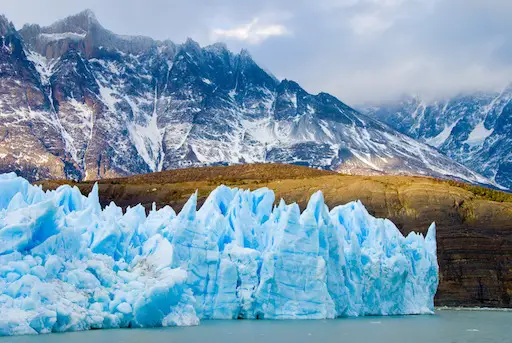
If you do not have time for a multi-day trek, I’d consider visiting Argentinian Patagonia.
You can’t go to Patagonia without seeing the Perito Moreno Glacier.
This glacier is over 60 kilometers long and is one of the most well-known sights in South America. The ice field around it also provides a beautiful backdrop for hiking, skiing, biking, or just relaxing with friends.
It also has a fascinating history that you might find interesting if you are into geology!
The name ‘Perito Moreno’ comes from Francisco Pascasio Moreno, who was born on March 4th, 1854, near Buenos Aires, Argentina.
He grew up to be a renowned explorer and naturalist who traveled through many parts of the world, including Antarctica, where he discovered new species of animals and helped map out territory for Argentina’s government by exploring much of the South American continent.

Perito Moreno is located in the massive Los Glaciares National Park, where ice covers almost 50% of the surface land.
As mentioned, the recommended season to visit is during the Southern Hemisphere’s summer (North America’s winter), although it’s also the most crowded.
Bravely, my first visit to this region was at the tail end of winter (August), so despite the freezing temperatures, the landscape was a tad more surreal because of the absence of the proverbial tourist flock.

Another recommended tour is to get close to Upsala Glacier.
First, for bragging rights, Upsala is the largest glacier in South America.
But not for long. Due to global warming, it is rapidly receding at an unstoppable rate. Visit now while you still can.
Another highlight in this area is El Chalten, the trekking capital of Argentinian Patagonia.
Located about 220km from El Calafate, this is a must-visit if you love hiking. Popular trekking spots include Laguna Torre and the base of Fitz Roy.

5. The Inca Trail: Machu Picchu
Machu Pichu in Peru is one of South America’s most popular tourist destinations.
It’s also been voted as one of the world’s new seven wonders, and it’s not hard to see why this archeological site should not be missed.
The city was built around 1450 by the Inca people, who were highly advanced for their time.
Its roads were paved with stones, which we still marvel at today.
Machu Pichu means “the old town,” and its significance isn’t just because it’s so old – but also because it’s well preserved.
Despite centuries of earthquakes and natural disasters that destroyed nearby structures, many buildings along the Inca Trail are still standing.
That makes Machu Picchu an even more valuable site for historians and archaeologists to study than if it had crumbled into dust.

The classic 4-day Inca Trail to reach Machu Picchu was no easy feat, but visiting crumbling Incan ruins in the middle of the Andes highlands made the effort and sweat worthwhile.
Machu Picchu and its cousin Huayna Picchu are must-sees. Avoid the month of February if you plan to embark on the Inca Trek.
Not only is it the wettest month of the year, but the government also closes the trail for repair.
Machu Pichu can also be comfortably accessed via train, which is available year-round for those not into multi-day treks.
All Inca treks originate from charming Cusco, the former Incan capital and Spanish colonial town.
With layers of rich history visible at every corner, Cusco deserves a minimum of 2 nights, with the first night entirely devoted to acclimation as it is located 11,152 feet above sea level.
Cusco is also near the famed Sacred Valley, which boasts several well-preserved archaeological sites.
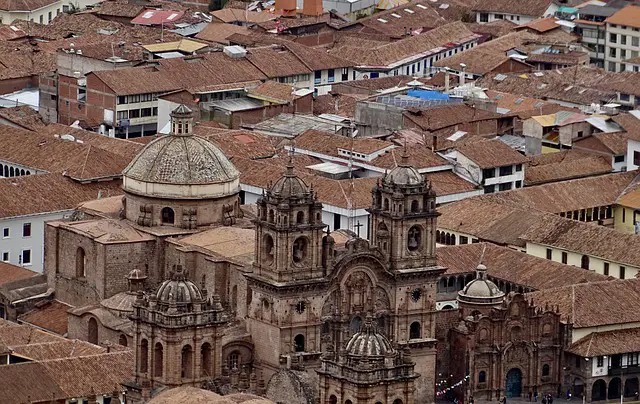
6. Salar De Uyuni, Bolivia
Travelers from all over the world are instantly drawn to this bucket list destination in South America.
Salar De Uyuni is a surreal landscape of salt flats that stretch as far as the eye can see, and it’s one of the most beautiful places on earth.
To say that Salar De Uyuni is otherworldly is an understatement. There is nothing like this anywhere in the world.
Salar de Uyuni is a high-altitude salt flat in Bolivia, the world’s largest. It sits at an elevation of 3,656 meters above sea level and covers 10,582 square kilometers.
Vast, surreal, and magical, Salar does not disappoint those who decide to embark on this brutally demanding trip across high-altitude terrain.
If you are willing to endure some discomfort and inconveniences, you should not miss Salar De Uyuni when your travels take you to South America.

Salar de Uyuni is also home to some fascinating wildlife, including flamingos and Andean foxes, which live here year-round.
While there isn’t much to do at Salar de Uyuni besides take pictures or walk across its infinite expanse, travelers here often say it was one of their favorite trips ever!
Be aware, though, that altitude sickness and hypothermia are not uncommon in this region of the globe, so appropriate caution is recommended.
The elements at this altitude are incredibly harsh, almost bordering on unbearable, so manage your expectations accordingly. I combined this trip with number 10 – Atacama Desert.

The gateway to this breathtaking natural phenomenon is the Bolivian city of Uyuni, in Bolivia’s altiplano (high plains).
Various tours are marketed at every storefront in Uyuni’s main drag – from day trips to cross-country voyages that terminate in Chile.
If you have the motivation and the lungs to rough it out, I recommend taking the 3-day tour to San Pedro Atacama.
You’ll see stunning volcanos, colorful lakes, and hundreds of flamingos along the way.
For tips on preparing for this journey, here’s my post on 5 Essential Tips to Survive Salar De Uyuni.
7. Easter Island
Easter Island, or Rapa Nui, is famous for its 887 extant monumental statues, called moai, created by the early Rapa Nui people.
But what makes this island so special? Easter Island is a bucket list destination because it has something to offer everyone!
Whether you want to explore or relax on your vacation, there is plenty to do and see.
The natural beauty of this island will leave you breathless with awe as you take in the sights like volcanoes and beaches made out of black sand!
But the chief tourist magnets are the majestic moais. Carved from volcanic rock, they are erected on ceremonial sites around the island.
Not much is known about why they were constructed, so this mystery just adds to the allure of the islands.

But how did these ancient people create such incredible works of art? It turns out they had help.
The Rapa Nui people most likely used trees as a guide to find straight lines and create symmetrical shapes with their stone tools. This is a feat that modern-day artists struggle with!
To this day, no one knows why the Rapa Nui stopped carving these statues or what caused them to disappear, but there’s still plenty left to explore in this beautiful bucket list destination.
The
Devote about 3-4 days to explore the island thoroughly. Public transport is almost non-existent in the islands, so prepare to hitchhike or join a private tour.
We also rented a car for a day to explore the hard-to-reach moais.
Do not miss: Sunrise in Ahu Tongariki.

8. Rio De Janeiro, Brazil
Rio De Janeiro is one of the most iconic cities in the world. With its white-sand beaches, tropical climate, and lively culture, Rio has long been a bucket list destination for many travelers.
Idyllically set where the mountains and the ocean converge, Rio De Janeiro is the only urban center that made it to my Top Ten list, and deservedly so.
There are plenty of things to do and places to see while visiting this city. With mile-long world-famous beaches that are household names, Rio boasts the spectacular Sugar Loaf and the iconic Christ the Redeemer statue.
As one of the most iconic landmarks of Rio De Janeiro, “Christ The Redeemer” is a statue at the top of Corcovado Mountain that has become one of the main symbols of the city and the whole country.
It has been named one of the new Seven Wonders Of The World, making it a must-see in Rio de Janeiro.

Another major attraction in Rio De Janeiro is Sugarloaf Mountain.
This mountain contains two peaks that form an unlikely shape resembling an old-fashioned sugar loaf.
Sugarloaf is the quintessential trademark of Rio’s landscape and a bucket list destination for many. It offers spectacular views of Rio’s world-famous beaches and urban sprawl.
The best way to get there is by cable car, which takes you through lush foliage in just seven minutes before settling at the breathtaking summit.
For those who are curious, Buenos Aires, Medellin, Cartagena, and Santiago are all phenomenal cities in their own right, but Rio easily outperforms the competition.
PRO-TIP: Don’t let these astounding sites distract you, though, as petty thieves abound. Enjoy your trip in this exhilarating city, but exercise caution so you do not lose your phone and your amazing Rio pictures saved in it.

9. Atacama Desert, Chile
South America is majestically blessed with enigmatic landscapes, and the
The Atacama Desert has long been considered one of the best travel destinations in South America.
This desert has become a prime tourist destination due to its vast attractions. Activities like hiking, climbing volcanoes, stargazing, observing wildlife (such as llamas, pumas, and flamingos), and visiting geysers are among the top things to do here.

It’s one of the driest places on Earth and has some of the oldest living organisms, including 5-million-year-old trees.
The region also features numerous volcanoes and lava fields fueled by geothermal activity deep below the surface.
It’s an ideal place for those who want to explore the untouched wilderness without having to venture too far from civilization.
San Pedro De Atacama, a tourist hub, is where all the tours and gourmet restaurants are located.
Frugal Tip: The tours are all negotiable. Haggle and shop around. This trip can be combined with number 6 (Salar De Uyuni, Bolivia).

Do Not Miss: El Tatio Geyser
Don’t forget to take the tour to El Tatio Geyser. This is a must-see destination for anyone who loves geothermal activity and unique places.
This geothermal field is located at the feet of the Andes Mountains, some 12 kilometers from Chile’s border with Argentina.
Tours typically leave the Atacama an hour before sunrise and are only available seasonally due to extreme weather conditions.
However, that doesn’t stop people from visiting because this place has fascinating features like steam vents that shoot boiling water up as high as 100 meters!
Its unique geological formations are worth exploring on foot if you have the time, which you should budget if you plan an extended stay in the Atacama Desert.

10. Isla Magdalena, Chile
Isla Magdalena is a small, remote island off the southern tip of Chile. Getting there was not easy, but it was worth every effort.
Although this island technically still falls within Chilean Patagonia, since it was such an indelible experience, I prefer it occupies its own spot in the Top Ten.
This sanctuary is one of the best spots in the world to witness hundreds of Magellanic penguins waddling and going about their daily routine.
The island can be accessed via organized boat tours from Punta Arenas, Chile — a highly recommended detour before or after trekking the terrific W-Trek (see number 2).

South American Bucket List Summary
| COUNTRY | TOP TEN MUST-SEES |
|---|---|
| CHILE | 4 (PATAGONIA, EASTER ISLAND, ISLA MAGDALENA, ATACAMA DESERT) |
| ARGENTINA | 2 (IGUAZU FALLS, PATAGONIA) |
| BRAZIL | 2 (IGUAZU FALLS, RIO DE JANEIRO) |
| ECUADOR | 1 (GALAPAGOS ISLANDS) |
| PERU | 1 (THE INCA TRAIL, MACHU PICCHU) |
| BOLIVIA | 1 (SALAR DE UYUNI) |
How to FLY to SOUTH AMERICA for almost FREE
All of my trips over the past decade had been ALMOST FREE via travel miles and points.
I’ve visited over 90 countries using miles and points, which I accumulate from credit card rewards and bonuses.
Travel Miles and Points Facebook Group
Would you like to learn how to travel frugally using credit card points?
Join other points enthusiasts in our free Travel Miles and Points Facebook Group, where we post and discuss all miles and points deals and promos.
We look forward to seeing you there!
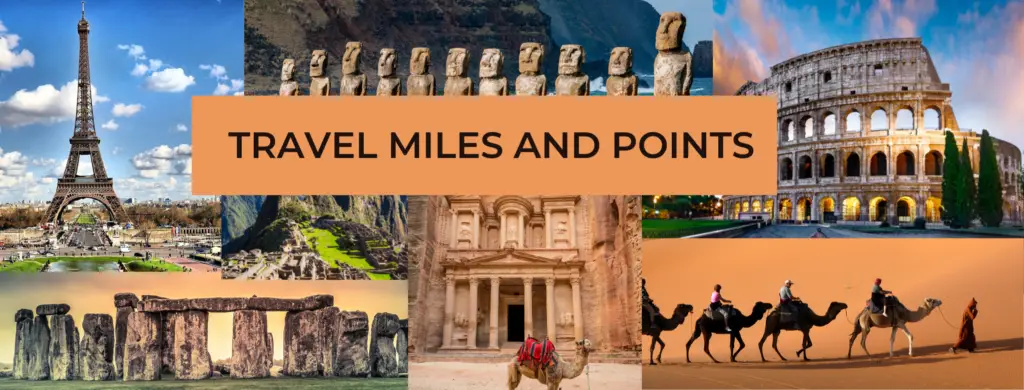
Travel Insurance
Final Thoughts
South America is undoubtedly one of the most spectacular continents in the world. Its diverse scenery has often been considered an explorer’s paradise.
If you also agree with this assertion, I urge you to plan your next vacation now!
It is one of my favorite regions and absolutely perfect for travelers with shoestring budgets.
I can’t wait for my next trip down south. I hope you enjoyed my Top 10 list of South America’s best things to see!
Do you agree with my South American top ten list?
Did your favorite site make it on this list?
If not, please share with me what other sites should be included. What are some of your favorites that weren’t mentioned here?
Safe Travels to you, my friend!
ADVERTISER DISCLOSURE: The Frugal Tourist is part of an affiliate sales network and receives compensation for sending traffic to partner sites, such as MileValue.com and Cardratings. This compensation may impact how and where links appear on this site. This site does not include all financial companies or all available financial offers. Terms apply to American Express benefits and offers. Enrollment may be required for select American Express benefits and offers. Visit americanexpress.com to learn more. All information about the American Express Schwab Platinum has been collected independently by The Frugal Tourist.
EDITORIAL DISCLOSURE: Opinions, reviews, analyses & recommendations are the author’s alone and have not been reviewed, endorsed, or approved by any of these entities.
USER-GENERATED CONTENT DISCLOSURE: The comments section below is not provided or commissioned by the bank advertiser. Responses have not been reviewed, approved, or otherwise endorsed by the bank advertiser. It is not the bank advertiser’s responsibility to ensure all questions are answered.


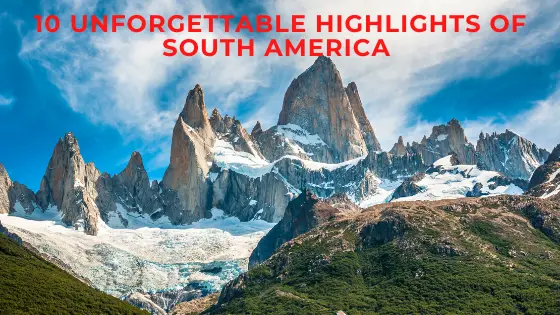

South American destinations have not made my travel bucket list, but now I may want to visit a few of these sites when it is safe to travel again. Thanks for sharing! 🙂
Great post, these are most definitely on our to-do list
This trip looks amazing…I love South America! 👓🍕🏨
Galapagos!!!!! I’ve been lucky enough to have been twice now and I hope to get back again someday. So many amazing things to do and see. We stayed a few days in Ecuador the first trip and adventured around Quito for the equator and ziplined through a Cloud Forest. But most of our time was spent on a few of the islands. It is the best scuba diving that I’ve experienced so far – so many sharks – and rays and turtles – Oh my!
Thank you for more travel ideas!
I have just finished my own bucket list post. A big one for me is the Galapagos and the Bolivian Salt Flats. There are so many beautiful places in South America. Some of the places you listed, I never thought of going to but the pictures are beautiful. If I get the chance, I would llike to visit all of these places eventually. Thank you for sharing these places with me.
All such wonderful places to see! I can’t wait to visit Rio one day. Thanks for sharing.